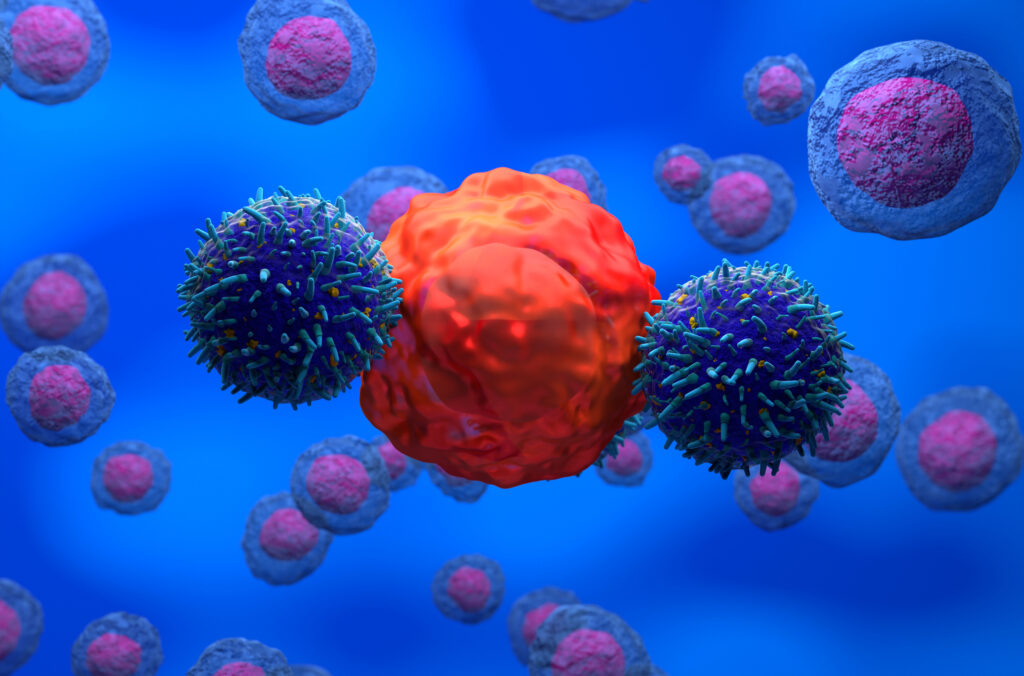They discover a method for improving the proliferation and activation of T cells in immunotherapy.

A recent study published in the journal Nature Nanotechnology and conducted by researchers at the University of California, Los Angeles (UCLA), presented an innovative platform that could open up new therapeutic options. The study marks an important advance in optimizing CAR-T cell therapy, providing a new approach that enhances T cell expansion and activation under more physiological conditions. Using a graphene oxide platform with antibodies allows you to accurately mimic key immunological interactions, not only increasing the production of CAR-T cells, but also This also makes it possible to eliminate dependence on exogenous factors such as IL-2.
Study marks important progress in optimizing CAR-T cell therapy
This advance could make CAR-T cell therapy more accessible and effective, as well as advance progress in other emerging areas of medicine. Thanks to interdisciplinary collaborations and an innovative approach to research at UCLA, we are one step closer to transforming cancer treatment and making immunotherapy a viable and effective option for more patients.
Graphene Oxide Platform
The UCLA team has developed an antibody-functionalized graphene oxide platform that mimics natural interactions between immune cells, enabling more efficient and physiologically relevant T cell activation. This platform represents a significant advance as it provides a culture environment that more closely mimics in vivo immunological conditions.
Graphene oxide is a flexible and biocompatible material that allows precise manipulation of immunological signals.
Graphene oxide is a flexible and biocompatible material that allows precise manipulation of immunological signals.. The researchers attached two specific antibodies to this material, designed to interact with molecules present on the surface of T cells, promoting their activation and proliferation. According to the results obtained, this approach made it possible to increase the number of T cells in a blood cell culture by more than 100 times over a period of 12 days.. This increase represents a significant improvement over traditional methods, opening new opportunities to optimize large-scale production of CAR-T cells.
Production of CAR-T cells
The ability to produce large numbers of functional CAR-T cells is essential for clinical translation of this therapy. A UCLA study found that using this graphene oxide platform, a fivefold increase in CAR-T cell production was achieved compared to traditional methods.. This finding is particularly relevant given that T cell expansion is one of the most critical bottlenecks in the manufacturing process of personalized therapies.
Using this graphene oxide platform, a fivefold increase in CAR-T cell production was achieved compared to traditional methods.
The success of this achievement is largely due to the platform’s ability to mimic the interaction between T cells and other immune cells, promoting the activation of key biochemical pathways in cell signaling and immune function. In particular, the researchers identified several molecular pathways involved in T cell receptor (TCR) signaling and the production of key cytokines such as interleukin-2 (IL-2), which are critical for the growth and differentiation of CAR-T cells. cells.
Elimination of dependence on exogenous IL-2
One of the major discoveries made in the study is that the graphene oxide platform has the ability to stimulate endogenous IL-2 production in T cells, reducing the need to add this growth factor to laboratory culture. IL-2 is an essential cytokine for T cell proliferation and survival, and its exogenous addition is a standard step in the generation of CAR-T cells.
The graphene oxide platform has the ability to stimulate endogenous IL-2 production in T cells.
However, the addition of IL-2 may have disadvantages, as its administration may cause side effects in patients, such as systemic toxicity, and complicate the process of cell expansion in the laboratory. The discovery that the platform stimulates natural IL-2 production provides a significant benefit as it simplifies the process of T cell expansion, reduces the risks of toxicity, and may reduce manufacturing costs for the therapy.
Postdoctoral fellow Enbo Zhu, co-author of the study, said: “We were very pleased to learn that our method can overcome the dependence on external IL-2 supplements. “This achievement encourages us to continue to explore additional CAR-T cell therapy options.”
Future prospects
This development represents an important step toward improving CAR-T cell therapy, both in terms of efficacy and cost-effectiveness. CAR-T cells have demonstrated remarkable efficacy in killing hematological tumors, but their use in solid tumors remains limited. Optimizing the environment for cell activation and proliferation, such as that offered by this new platform, could be a fundamental tool to address these issues and improve efficacy in other types of cancer..
Optimizing the environment for cell activation and proliferation may be a fundamental tool for improving the effectiveness of treatments for other types of cancer.
Except, The use of functionalized graphene oxide opens up possibilities for adaptation to other areas of regenerative medicine.. Professor Yu Huang, one of the study leaders, highlighted the technology’s potential for application in other contexts, including tissue engineering and the development of new cell-based therapies.
For her part, Lily Young, co-author of the study and an expert in the field of immunology, said that “the increase in T cell activity and proliferation achieved with this approach represents a significant advance in CAR-T cell therapy. These results suggest that we can significantly improve the effectiveness of treatment and give patients new hope.“
